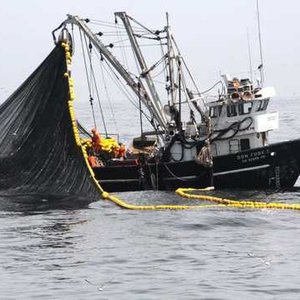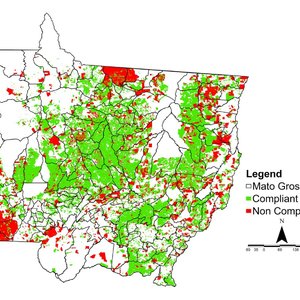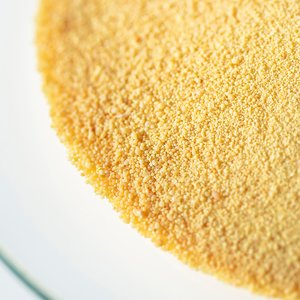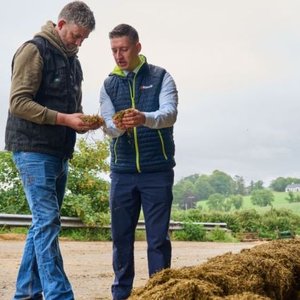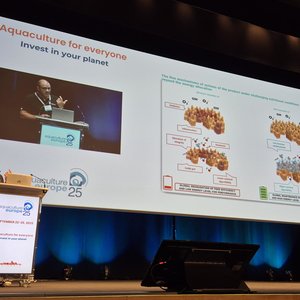New indications for AQUAFLOR (florfenicol) Type A Medicated Article have given more U.S. fish farmers additional options for using the broad-spectrum, in-feed antibiotic in all freshwater-reared finfish.
The major changes:
•AQUAFLOR can now be used in catfish, tilapia, striped bass, trout and all other freshwater-reared finfish at dose rates of 10 to 15 mg/kg bodyweight/day for the control of mortality due to columnaris disease associated with Flavobacterium columnare.
•AQUAFLOR is approved for use in all freshwater-reared warmwater finfish at a dose rate of 15 mg/kg for the control of mortality due to streptococcal septicemia associated with Streptococcus iniae, an organism known to cause significant economic losses in farm-raised tilapia and some other species.
“The new claims for AQUAFLOR reflect our ongoing investment in our aquatic animal health product line, as well as our commitment to this rapidly growing industry,” said Palma Jordan, global marketing director for aquatic animal health products, Merck Animal Health.
As before, Jordan said, AQUAFLOR is also approved for the control of mortality due to enteric septicemia (ESC) associated with Edwardsiella ictaluri in catfish, as well as for the control of mortality due to furunculosis associated with Aeromonas salmonicida and coldwater disease associated with Flavobacterium psychrophilum in freshwater-reared salmonids.
Added convenience
While the new “all freshwater-reared finfish” claim for columnaris disease — a widespread bacterial disease common in many species — is expected to benefit several public and commercial segments of U.S. aquaculture, it will be particularly helpful to catfish producers and feed mills serving that industry, according to Richard Endris, PhD, aquaculture research program manager for Merck Animal Health.
Previously, Endris explained, catfish producers treating for columnaris disease needed to use a separate product — AQUAFLOR®-CA1 (florfenicol) — which contained the same active ingredient as AQUAFLOR but was conditionally approved by the U.S. Food and Drug Administration (FDA) for the control of mortality in catfish due to columnaris disease associated with Flavobacterium columnare. The new label for AQUAFLOR allows feed mills and producers to use the same product for both columnaris and ESC, the two leading bacterial diseases of farmed catfish. Merck Animal Health has since discontinued AQUAFLOR-CA1.
Consistent withdrawal times
Merck Animal Health also announced that the withdrawal time is now 15 days prior to slaughter for all species and indications. Previously, the withdrawal time for fish that received 10 mg/kg was 12 days for catfish and 15 days for freshwater-reared salmonids. The company emphasized that the new withdrawal time was established to facilitate compliance across all species and dose rates without any change in the high safety profile of the AQUAFLOR.
AQUAFLOR, which can be top-coated or incorporated in both floating and sinking feeds, has been shown to be highly stable following high-temperature extrusion at feed mills. It is also highly palatable, which helps to optimize antibiotic intake. AQUAFLOR medicated feed should be administered as the sole ration for 10 consecutive days. AQUAFLOR is not approved for use in breeding stock or for use in recirculating aquaculture systems.
VFD status
AQUAFLOR is classified by FDA Center for Veterinary Medicine as a Veterinary Feed Directive (VFD) drug, a category established in 1999 to help the agency more closely control new in-feed therapeutic products, primarily antimicrobials, and their use in food animals. Producers may obtain VFD drugs through normal feed distribution channels, but they do require a signed Veterinary Feed Directive from a licensed veterinarian. (See accompanying article.)
AQUAFLOR was developed specifically for aquaculture use; its active ingredient, florfenicol, is not used in human medicine. Its sister product, NUFLOR® (florfenicol) has been used successful for treating respiratory disease in beef and non-lactating dairy cattle since 1996 and in swine since 2007.
For more information about AQUAFLOR and VFD protocols, producers should contact their extension specialist, veterinarian, diagnostician or feed company representative. Information also may be obtained at aquaflor-usa.com or by calling Merck Animal Health at 1-800-521-5767.
Understanding the VFD process
U.S. fish farmers using AQUAFLOR (florfenicol) for the first time need to become familiar with the FDA guidelines for Veterinary Feed Directive (VFD) drugs. Here’s how the process works:
•The producer contacts his or her veterinarian for diagnosis and treatment.
•The veterinarian makes a determination that a VFD medicated feed is necessary within the veterinarian-client-patient relationship.
•The veterinarian issues a signed VFD order by including all of the information needed for a valid VFD or by filling out the drug supplier’s preprinted form (if available) and giving it to the producer.
•The producer uses the VFD to order the feed from a feed supplier. A VFD feed may not be distributed to a producer without a signed VFD form.
•Licensed feed manufacturers and distributors that ship a VFD feed to a downstream distributor or retailer must receive and retain a copy of written acknowledgement stating that the VFD feed will be further distributed only in accordance with FDA requirements.
•The veterinarian who issues the VFD, the producer and the person or company supplying the VFD feed must retain copies of the signed VFD form for a minimum of 2 years.
For more information on the VFD process, go to aquaflor-usa.com.
CAUTION: Federal law limits this drug to use under the professional supervision of a licensed veterinarian. Animal feed bearing or containing this veterinary feed directive drug shall be fed to animals only by or upon a lawful Veterinary Feed Directive (VFD) issued by a licensed veterinarian in the course of the veterinarian's professional practice.


